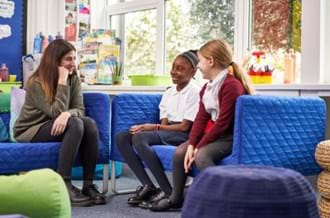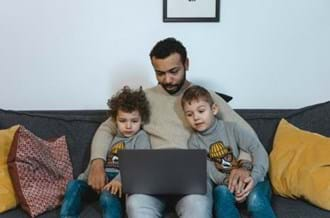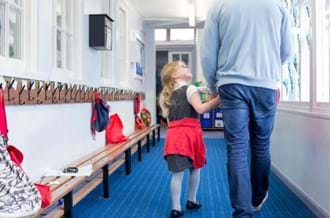The impact of Place2Be’s Family Practitioners: supporting parents and carers in Wales
The impact of Place2Be’s Family Practitioners: supporting parents and carers in Wales

Carrie Charles
Carrie is an early years practitioner, holistic therapist and counsellor. She started her Place2Be journey in 2019 as a counsellor on placement at Tredegarville Primary school, South Wales, and now works there as a Mental Health Practitioner. She also works at Moorland Primary school as a School Project Manager.
Place2Be’s Family Practitioners offer specialist support for parents and carers in Place2Be partner schools. We sat down with Carrie, a School Project Manager based in Wales, to learn about the impact that Family Practitioners have on the families and communities they work with.
Could you tell us about the role of the Family Practitioner?
A child and their parent or carer might be referred to a Family Practitioner because of challenges in the family dynamics, or with the parent-child relationship. This might present as attachment issues, for example, separation anxiety.
Family Practitioners can offer Personalised Individual Parent Training (PIPT), which involves teaching skills to parents and carers to help manage their child’s behaviour. You would have up to ten sessions, some with the child and parent or carer together, and some separately.
They can also offer extra support and advice for families within the school. For example, Gary, the Family Practitioner at my school runs regular workshops with parents and carers on how to manage challenging behaviour.
Have you seen the Family Practitioner service make a real difference at your school?
There’s one particular family that Gary is working with, where the parent needed a lot of support and guidance. She was reluctant and didn’t want to give consent when her daughter was initially referred to Place2Be. However, Gary continued to engage with her over time and it was eventually decided that he would work with her through PIPT. After the sessions, the change in her was huge and she had nothing but praise for the work that Gary did. I think the sessions helped shift something in her that she had been carrying for a very long time.
In this particular situation, attachment-related issues with the parent were having a big impact on the child. But after the change in the parent, I could see the shift in the daughter when we began doing one-to-one counselling sessions; she was processing so much through play.
How does the Family Practitioner role differ from parent counselling?
We used to offer parent counselling, which can be very effective, but I think the reason the Family Practitioner role is so powerful, is that it connects the dots. Rather than having separate services for the parent and child, the Family Practitioner works with the parent, the child and the Place2Be School Project Manager (SPM). It brings it all together, creating a connected, supportive community around the child.
I think the most important thing is that we are all a team, and the Family Practitioner offers an extra layer of support. When waiting lists are so big for support groups outside of schools, Gary can provide more accessible, in-school, one-to-one support sooner rather than later. I feel great being able to offer that to families.
How fantastic for these schools that they have an umbrella of support with the SPM, Mental Health Practitioner and Family Practitioner. I can now look at a referral and decide what would suit each child, whether that’s PIPT, one-to-one counselling, Journey of Hope, or small group work.
How do the School Project Manager and Family Practitioner work together?
When a referral comes in, I’d first speak with the teacher (generally there have already been conversations through Place2Think around children before a referral). I'd then meet with the parent or carer to get an idea of which type of support would best suit the child and family.
If a Family Practitioner is needed, Gary and I would carry out the assessment with the family and decide whether PIPT or a Parent Partnership is most suitable.
What's fantastic about our SPM and Family Practitioner roles is that we're already established in the school. For instance, the child might have started off with a one-to-one with me, and then we're coming towards the end of the sessions, but I feel a PIPT intervention might be needed. They’ve already experienced and trust Place2Be. I think it's that trust of Place2Be, and that it's not another person that you've got to start totally afresh with that makes it so valuable.
Learn more about Place2Be’s Family Practitioners
Want to do a role like Carrie and Gary? Take a look at our latest vacancies
News & blogs

Uniting health and schools to improve mental health
Read Place2Be Chief Executive, Catherine Roche's, thoughts on uniting health and schools to improve mental health.
Read more
Social media, my children and me
Place2Be's Programme Leader for Family Work, Judah, explores how he navigates technology and social media with his children.
Read more
Fostering the power of relationships
Celebrate the power of relationships to transform the lives of children and young people in foster care.
Read more



